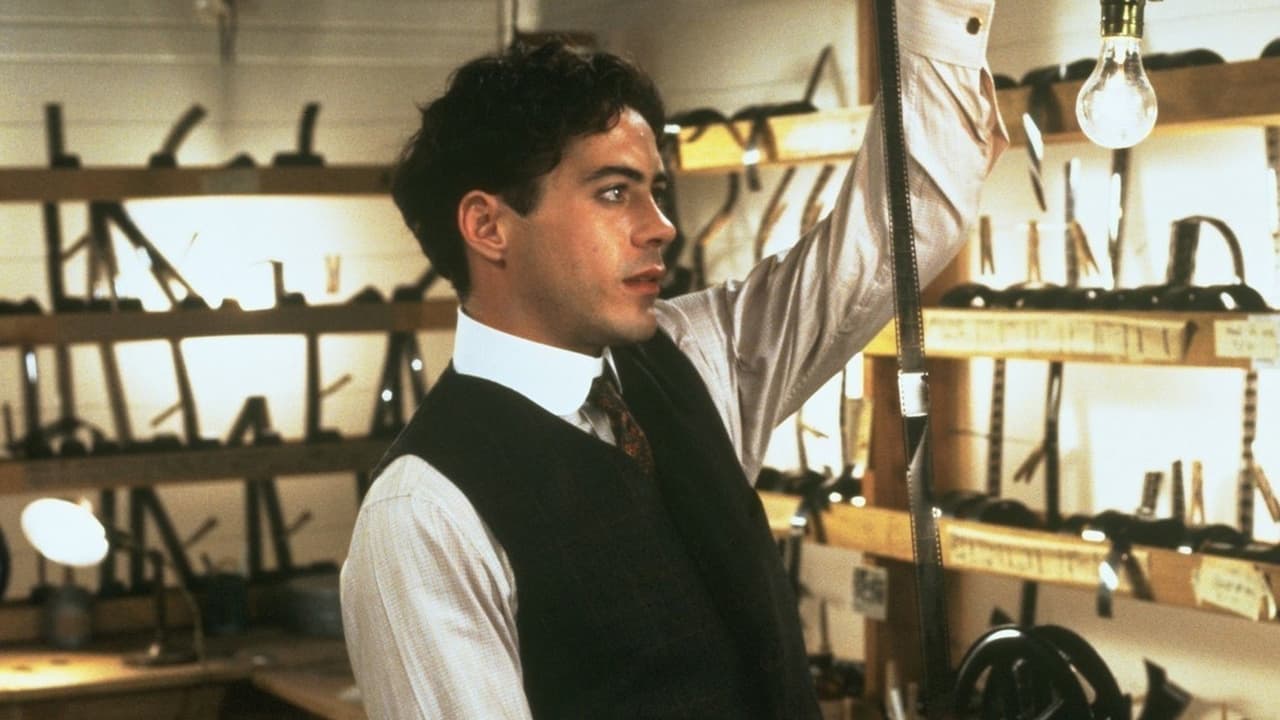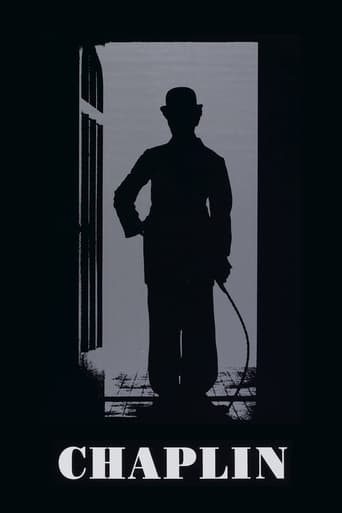

It's notable that the best bits of this are when they play excerpts from the classics as a preamble to the "We're Sorry" episode at the Oscars in 1972. It's only then do you sense the genius of the man which rarely comes across from the episodic excerpts that form the rest of the film. Downey is good enough and the rest of the cast do their stuff but it never captures anything but a ghost of the real man for the meat and potatoes are inside the pants and the heart of the tramp. The synthesis of ballet dancer, acrobat and comedian that endear us to the tramp barely comes across although you get a sense of his driven and obsessive nature as he strove to improve on the art form that had defined him. It's become fashionable to deride the sentimentality and pathos of his later films and to elevate others, notably Keaton, above him. But the bedrock of his genius lies in the 100 or so one and two-reelers that innovated and developed the history of cinema and the classic features of his maturity. The film doesn't ever come close to capturing that.
... View MoreBefore I watch the movie, I thought that Chaplin's life was some kind a typical Hollywood actor's life: glamorous and easy; and he was the greatest actor of the 20's. But the movie completely changed my mind; now I'm able to see the real Chaplin, the one with a troubled love life, controversy political views and a big effort to achieve what he wanted, even having serious problems in his early life. Robert Downey Jr. is in one of his greatest performances as an actor, letting the viewer sometimes immerse completely itself inside the story. The movie has lots of beautiful shots, using the maximum of the photography art as possible to connect the image with the feelings which the director is trying to transmit. The narrative of the movie that tries to let it with some kind of a explanation behind each scene, moving through the past to the future is a little annoying sometimes, but it can't take the credit of the movie that tries to do a Chaplin's narrative-biography.I strongly recommend to watch, if you don't like Charles Chaplin's work, you might be interested in see what is his real history and the wonderful performances of the film.
... View MoreWhen people think about Silent Movies, the first name – if not the only one – that pops into mind is 'Charlie Chaplin'. The hat, the toothbrush moustache, the twirling cane and the awkwardly funny walk are unmistakable elements of his character. You might have seen a few of his productions, some clips shown randomly, but that is generally it. Everything most people know about Charlie Chaplin is restricted to his movie performances – or at least it was so for me. I knew he was a British silent movie actor, and about his film Modern Times. I knew of his peculiar ways of acting, and dressing, and walking – and that was it. We only know Chaplin, the character – not Chaplin, the man – and we often mistake one for the other. After watching this movie, we can paint a clearer picture of who he was. We learn about his difficult childhood, in a poor neighbourhood with a mentally ill mother; about his many love interests and troubled relationships; about his juridical problems; that he was persecuted by McCarthyism and banish from the United States accused of communism. We get to see Chaplin building his career, the background to his movie ideas and the many accomplishments he made in different areas inside film making. Taking all that into consideration, I still see Chaplin as the funny persona with the peculiar ways, but a completely new layer was added to him. I can see now how he had a troubled life, and how he could be a serious, grave men in reality – nothing like his roles is his movies. Now, I personally see his movies as an escape to the troubled times he and the world were going through – an alternative to all the tension and seriousness life dumped at him. For me, the reason he is so famous still to this day is because of the capacity his movies had to transmit the values and the events of his time in an accurate and critic way – but without losing their funny and entertaining touch. He could capture both the spirit of his time and the public's undivided attention with such mastery that his movies have lasted a century and will last many more. He had such great accomplishments in the movie industry, and gained so much recognition that his name was not forgotten to this day. Adding to the biographical aspects of the movie, was also the way it was presented that got my attention. Even though it is a current movie, and filmed in such way, there were scenes in which you could see the memory of a Silent Movie. Incorporating those scenes was a great way of honouring the work of Chaplin, and of balancing the seriousness of his life with the lightness of his movies – for when those kinds of scenes were presented, the heavy tone of the movie would dissipate, giving place to a lighter, funnier atmosphere. They did to his biography the same thing his own movies did to his life. All these aspects make this a worth-watching movie. The production gives us background to understanding more deeply Chaplin's work, and allows us to know a little bit more about the man behind the ideas and funny scenes. It contributes to honouring Chaplin's memory and to allowing it to live on for as long as it possibly can.
... View MoreBefore watching Richard Attenborough's Chaplin, the first image that would come to my mind as someone says the name "Charlie Chaplin" to me would be an ancient, old, and unfunny comedy actor that is a thing of the past. Charlie Chaplin's films and his purpose of comedy he was trying to convey always seemed too shallow and juvenile to stay awake while watching them. After learning the knowledge that was explained throughout this film, one can realize that that ideology was only scraping the surface of his films and especially his personal life. This film does a decent job of showing the complexity of Chaplin's life and how one must look past his persona of the Tramp to see how his true life really was. I learned how he pioneered the motion picture industry and how he had so much influence and impact that turned movies into what they are today. I enjoyed the movie for these reasons, but it had its issues. At times the film came across as too boring as the scenes would linger too long. The movie also attempts to hit you with emotions just like he was experiencing throughout his life, such as the complications with his insane mother or his extreme hunger to become the best in Hollywood, but it fails to create an impact on the viewer at times.
... View More